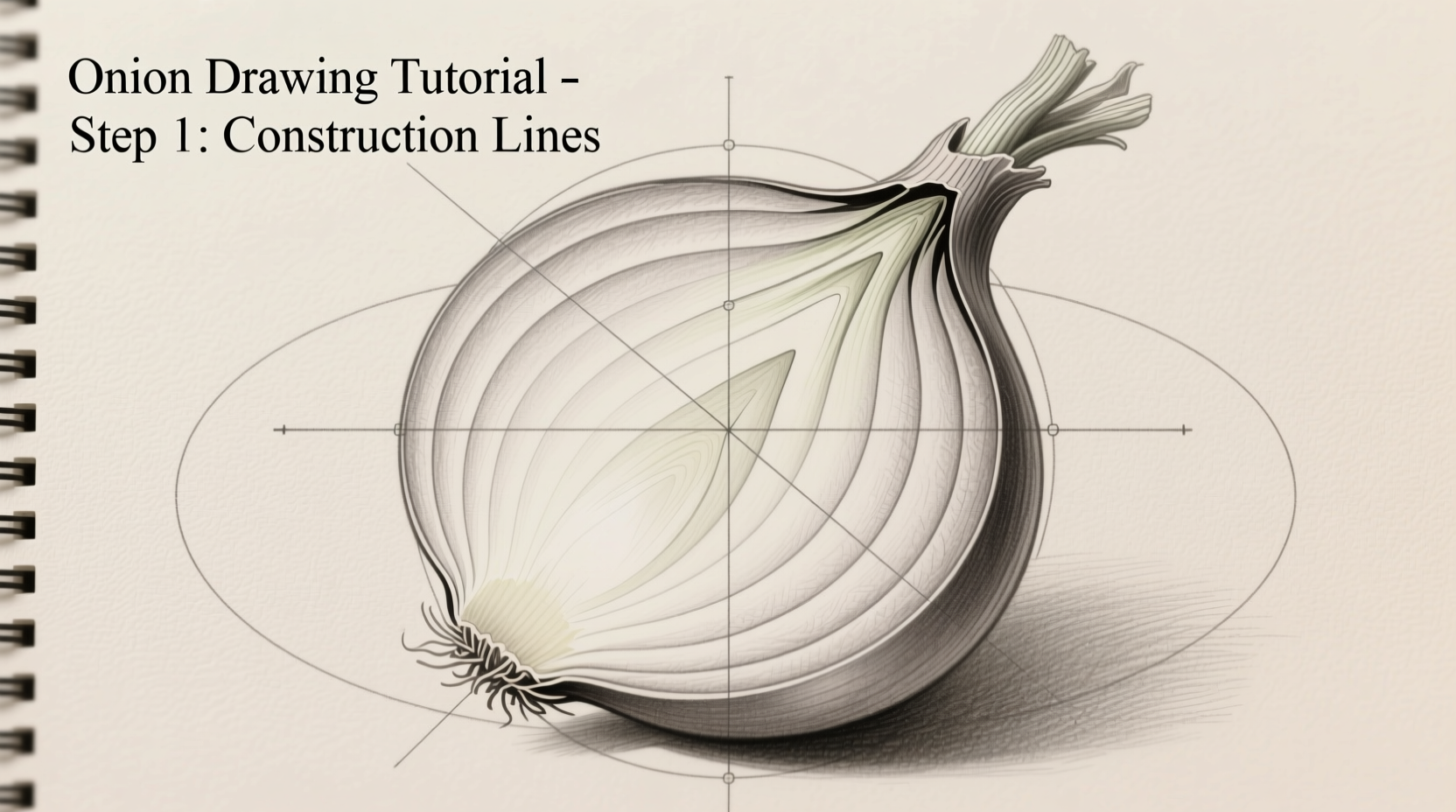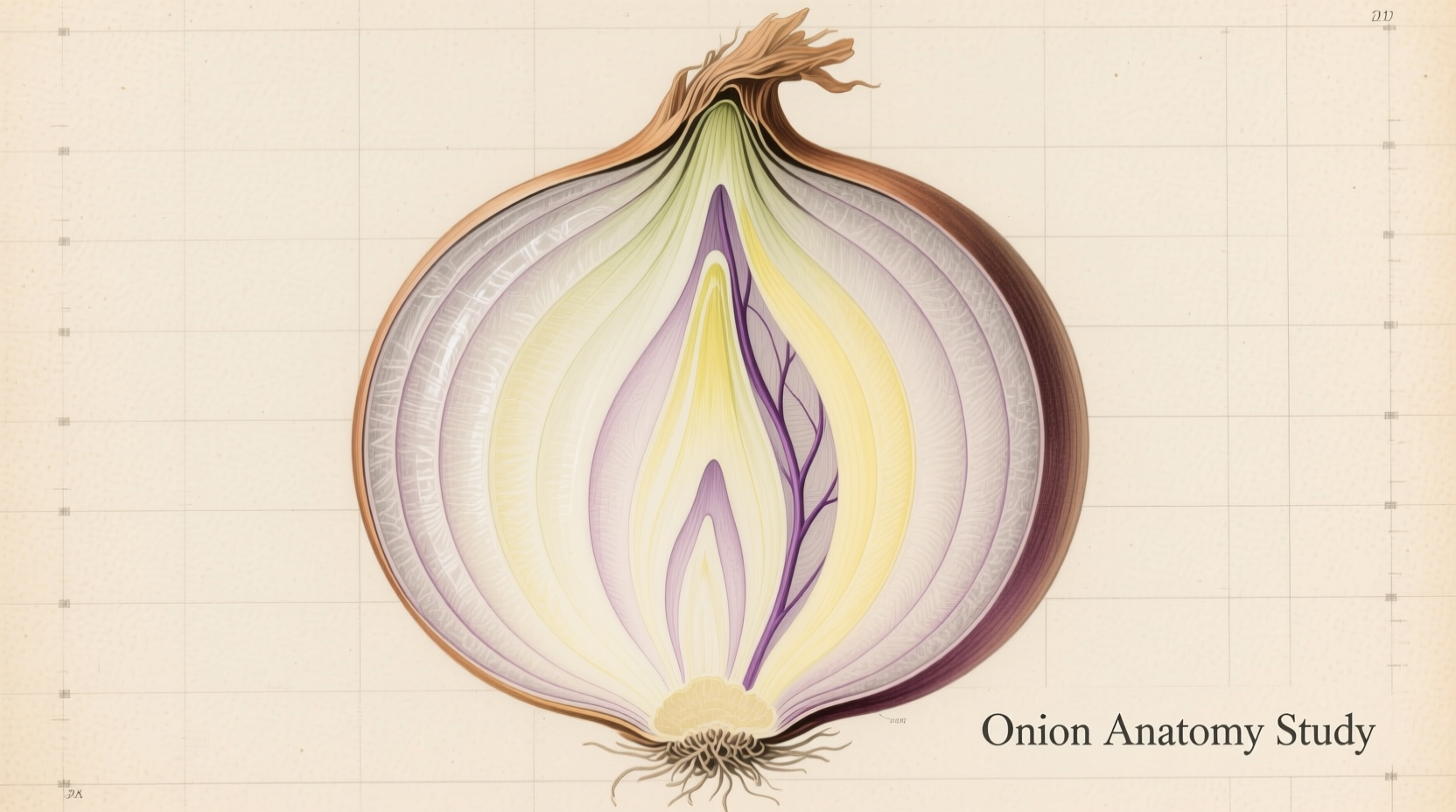Onion drawings serve as a fundamental exercise for artists seeking to develop their observational skills and understanding of organic form. Unlike geometric subjects, onions present unique challenges with their layered structure, papery texture, and subtle value transitions that make them ideal for practicing realistic rendering techniques. Professional botanical illustrators and art educators consistently recommend onion studies for beginners due to their accessible complexity and the valuable lessons they teach about light, shadow, and three-dimensional form.
Why Onion Drawings Matter for Artistic Development
Onions have been a staple subject in art education for centuries, appearing in sketchbooks of Renaissance masters to contemporary art classrooms. Their enduring popularity stems from several key educational benefits:
- Teaches observation of organic, non-uniform shapes
- Demonstrates how light interacts with translucent materials
- Develops patience through rendering delicate paper-like textures
- Builds understanding of value transitions across curved surfaces
- Provides accessible subject matter for artists at all levels
| Historical Period | Artistic Significance | Notable Examples |
|---|---|---|
| Renaissance (1400-1600) | Symbol of humility and modesty in religious paintings | Onions appear in Dutch still lifes by Pieter Claesz |
| Baroque (1600-1750) | Represented life's fragility and transience | Willem Kalf's "Still Life with a Silver Ewer" features prominent onion |
| 19th Century | Academic study for developing observational skills | Édouard Manet's early sketches included onion studies |
| Contemporary | Fundamental exercise in art education worldwide | Required subject in most foundational drawing curricula |
Essential Materials for Professional-Quality Onion Drawings
While you can sketch an onion with just a pencil and paper, selecting appropriate materials significantly enhances your ability to capture the onion's distinctive characteristics. The Royal Drawing School in London recommends these specific tools for serious onion drawing practice:
- Pencils: Range from 2H (for light construction lines) to 6B (for deep shadows) - avoid using only one pencil grade
- Paper: Medium-tooth drawing paper (90-140 lb weight) that accepts multiple layers without becoming shiny
- Eraser: Kneaded eraser for subtle value adjustments and precision vinyl eraser for clean highlights
- Blending tools: Paper stumps in multiple sizes for smooth transitions between layers

Understanding Onion Anatomy for Accurate Representation
Professional botanical illustrators emphasize that understanding the underlying structure of an onion is crucial for creating convincing drawings. Unlike geometric forms, onions have irregular shapes with distinctive features that vary by variety. The Missouri Botanical Garden's illustration program teaches students to identify these key structural elements:
- Root plate: The slightly concave base where roots emerge (often appears darker)
- Neck: The tapered top where green shoots would grow (creates distinctive shadow patterns)
- Outer skin: Translucent, papery layers that create subtle value shifts
- Internal layers: Visible at cut sections with distinctive curved patterns
When setting up your still life, position a single light source at 45 degrees to clearly define the onion's form. Avoid overhead lighting which flattens the subject. The National Gallery of Art's drawing curriculum recommends using natural north light for the most accurate value representation when practicing onion drawings.
Step-by-Step Process for Realistic Onion Drawings
Follow this professional illustrator's approach to create convincing onion drawings that demonstrate depth and texture:
Stage 1: Construction Drawing (5-10 minutes)
Begin with light, gestural lines to establish the overall shape. Note that onions are rarely perfect spheres - most have subtle irregularities. Draw a vertical center line and horizontal equator line to help maintain symmetry. Include the distinctive neck taper and root plate indentation. This foundational approach prevents common mistakes like drawing onions as perfect circles.
Stage 2: Defining Major Value Areas (15-20 minutes)
Identify the core shadow (darkest area where light doesn't reach), highlight (brightest spot), and reflected light (subtle illumination from surrounding surfaces). Use a 2B pencil to block in the darkest areas, preserving the highlight areas with your eraser. Remember that onions have soft transitions between values, unlike geometric objects with sharp shadow edges.
Stage 3: Rendering Texture and Layers (30-45 minutes)
This is where onion drawings become distinctive. Use a sharp pencil to create delicate, directional marks following the onion's natural curves. The key is varying pressure to suggest the papery texture without creating harsh lines. Focus on the overlapping layers at the neck and base where the skin peels slightly. Professional illustrators often use a technique called "scumbling" - small circular motions - to create the onion's characteristic surface quality.
Stage 4: Refinement and Final Details (15-20 minutes)
Add subtle variations in the skin's translucency, particularly near the edges where light passes through thinner layers. Enhance the root plate texture with fine, wispy lines. Use a kneaded eraser to lift out delicate highlights on the curved surface. The final step should enhance rather than overwork the drawing - remember that onions have soft edges and subtle transitions.
Common Challenges and Professional Solutions
Even experienced artists encounter specific challenges when drawing onions. Here are solutions to the most frequent issues:
- Problem: Onion appears flat or two-dimensional
Solution: Strengthen the value range by darkening shadows and preserving highlights. Ensure transitions between values are gradual, not abrupt. - Problem: Texture looks scratchy or unnatural
Solution: Use lighter pressure and follow the onion's natural curves. Vary pencil direction to avoid repetitive patterns. - Problem: Neck area looks disconnected from the main body
Solution: Pay attention to how the layers converge at the neck. Use subtle value shifts rather than hard lines. - Problem: Drawing lacks the characteristic onion translucency
Solution: Lighten the edges opposite the light source to suggest light passing through thin layers.
Advanced Techniques for Botanical Accuracy
For artists seeking museum-quality onion drawings, these professional techniques elevate your work:
- Layered pencil approach: Build values gradually with multiple light layers rather than heavy pressure
- Directional mark-making: Follow the onion's natural growth patterns with your pencil strokes
- Translucency effects: Use a hard pencil (H or 2H) to create subtle value shifts in thin areas
- Atmospheric perspective: Slightly soften edges on the far side to enhance three-dimensionality
According to the American Society of Botanical Artists, mastering these techniques through consistent onion drawing practice typically takes 6-8 weeks of regular study. Their educational materials emphasize that "the humble onion teaches more about organic form than any geometric study" and remains a required subject in their certification program.
Practical Exercises to Improve Your Onion Drawing Skills
Develop your abilities with these targeted practice activities:
- 30-minute daily studies: Draw the same onion from different angles each day to understand its three-dimensional form
- Value scale challenge: Create a drawing using only 5 distinct values to simplify complex transitions
- Blind contour drawing: Draw without looking at your paper for 5 minutes to improve observational skills
- Comparative study: Draw multiple onion varieties side-by-side to understand structural differences
For optimal progress, art educators recommend completing at least 12 onion drawings before moving to more complex subjects. Each drawing should focus on a specific skill - one session might emphasize texture, another value transitions, another structural accuracy.
How Onion Drawings Fit Into Your Artistic Journey
While seemingly simple, onion drawings provide foundational skills applicable to virtually all drawing subjects. The ability to render organic forms, understand light interaction with translucent materials, and capture subtle textures transfers directly to more complex subjects like human skin, fruit, or fabric. Many professional artists, including botanical illustrators at institutions like the New York Botanical Garden, consider onion studies essential preparation before tackling more intricate plant subjects.
When approaching onion drawings, remember they're not just about creating a likeness but understanding the principles of form, light, and texture. As you develop these skills through consistent practice, you'll find your ability to draw more complex subjects improves significantly. The patience and observational skills cultivated through onion drawing practice form the bedrock of professional artistic ability.











 浙公网安备
33010002000092号
浙公网安备
33010002000092号 浙B2-20120091-4
浙B2-20120091-4